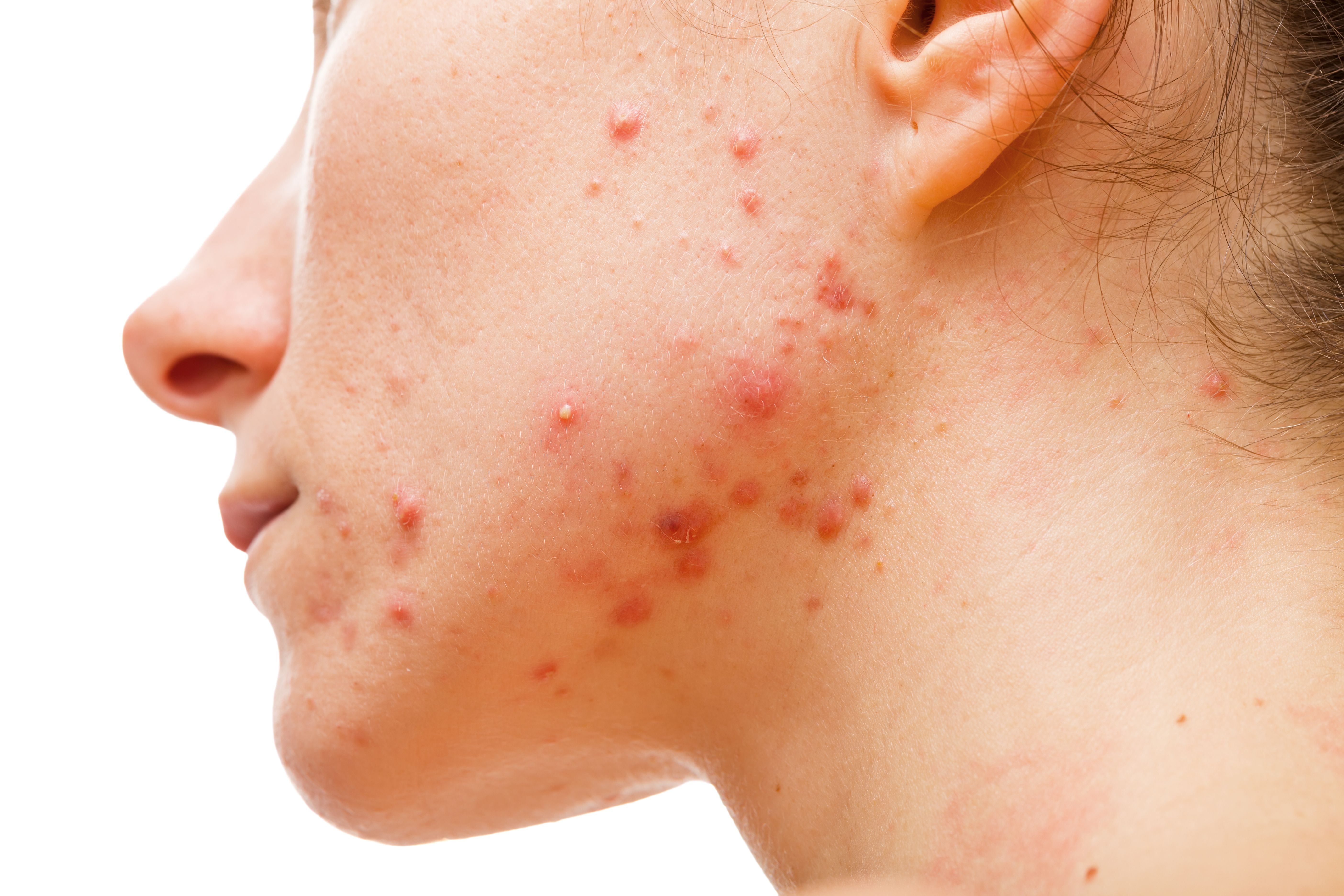- Case-Based Roundtable
- General Dermatology
- Eczema
- Chronic Hand Eczema
- Alopecia
- Aesthetics
- Vitiligo
- COVID-19
- Actinic Keratosis
- Precision Medicine and Biologics
- Rare Disease
- Wound Care
- Rosacea
- Psoriasis
- Psoriatic Arthritis
- Atopic Dermatitis
- Melasma
- NP and PA
- Skin Cancer
- Hidradenitis Suppurativa
- Drug Watch
- Pigmentary Disorders
- Acne
- Pediatric Dermatology
- Practice Management
- Prurigo Nodularis
- Buy-and-Bill
Article
Acne vulgaris increases with hidradenitis suppurativa
Author(s):
Patients with hidradenitis suppurativa have a high prevalence of acne vulgaris, according to the latest research.
Patients with hidradenitis suppurativa have a high prevalence of acne vulgaris, according to the latest research. (Ocskay Bence - stock.adobe.com)

Patients with hidradenitis suppurativa have a high prevalence of acne vulgaris, research published in Journal of the American Academy of Dermatology shows.1
Furthermore, the mean age of onset of hidradenitis suppurativa patients is lower when they also have acne vulgaris, the data show.
The prevalence of acne vulgaris was assessed in consecutive new patients with hidradenitis suppurativa referred to the Department of Dermatology at Bispebjerg Hospital in Copenhagen, Denmark.
A total of 302 patients (191 women and 111 men) with a mean age of 39.4 years referred between January 1, 2016 and October 8, 2018 were included in the evaluation.
The overall prevalence of acne vulgaris was 21.2%. Nineteen of the patients with acne vulgaris (29.7%) had hidradenitis suppurativa assessed as Hurley stage I, 39 (60.9%) Hurley stage II and 6 (9.4%) Hurley III. There was no statistical difference in Hurley stage of hidradenitis suppurativa between patients with and without acne.
However, acne vulgaris was associated with a lower age of onset of hidradenitis suppurativa. Those patients with hidradenitis suppurativa and acne vulgaris attending the clinic were significantly younger than those without acne vulgaris (33.8 versus 40.8 years, p<0.001), and the mean age at onset of hidradenitis suppurativa was significantly lower in patients with acne vulgaris than it was in those without (21.4 versus 27.2 years, p<0.001).
Hidradenitis suppurativa patients with acne vulgaris also had lower levels of plasma inflammatory markers (C-reactive protein [CRP], neutrophils, and neutrophil/lymphocyte ratio [NLR]) than those without acne vulgaris.
Prevalence of acne vulgaris among hidradenitis suppurativa patients was not impacted by the sex of the patient, smoking status, obesity or diagnosis of polycystic ovary syndrome (PCOS). There was also no difference in Dermatology Quality of Life Index (DLQI) and localization of hidradenitis suppurativa between the patients with and without acne vulgaris.
“Patients referred for specialized hospital care have a high prevalence of acne vulgaris. Furthermore, hidradenitis suppurativa patients with acne vulgaris have a significantly lower mean age and age at onset of hidradenitis suppurativa compared to hidradenitis suppurativa patients without acne vulgaris,” said Astrid-Helene Ravn Jørgensen of the Department of Dermato-Venereology and Wound Healing Centre at Bispebjerg Hospital in Copenhagen, Denmark. “These findings call for greater awareness of this association and for optimization of comanagement approaches.”
The Danish findings support those of a population-based sample from the United states which found that the prevalence of acne vulgaris was 15.2% among adults with hidradenitis suppurativa, compared to 2.9% in adults without hidradenitis suppurativa.2
The US cross-sectional analysis used electronic health records data from a population-based sample of over 55 million patients to identifying adults with acne vulgaris among patients with and without hidradenitis suppurativa.
Prevalence of acne vulgaris in patients with hidradenitis suppurativa was found to be 15.2% (7,315 /48,050), compared to 2.9% (497,360 /16,899,470) for adults without hidradenitis suppurativa (p<0.001). Prevalence of acne vulgaris was greatest among hidradenitis suppurativa patients who were female (16.4%), aged 18-44 years (18.2%), non-white (17.5%), obese (15.5%), and had PCOS (28.7%).
Hidradenitis suppurativa patients had 4.51 times the odds of having acne vulgaris compared to non-HS patients, and the association between hidradenitis suppurativa and acne vulgaris was generally stronger for patients who were male, aged ≥ 65 years, non-whites, and obese.
Commenting on the Danish findings in a hospital based population, Amit Garg, of the Donald and Barbara Zucker School of Medicine at Hofstra / Northwell, New Hyde Park, NY, who was one of the researchers who conducted the US population study, said that while their study also found no significant differences in prevalence of obesity or smoking between hidradenitis suppurativa patients with and without acne vulgaris, in contrast to the Danish study a significant association of hidradenitis suppurativa and acne vulgaris with female sex and presence of PCOS was observed. Women with hidradenitis suppurativa and acne vulgaris had twice the prevalence of PCOS compared to women with hidradenitis suppurativa who did not have acne vulgaris (11.7% vs. 5.7%, p<0.001).
He said: “The association between acne vulgaris and PCOS is already well established. Our group recently demonstrated that approximately 1 in 11 women with hidradenitis suppurativa also have PCOS.3 The link among the three conditions is not yet clearly established, as circulating and end organ androgen expression appear to be normal among hidradenitis suppurativa patients.”
References1 Ravn Jørgensen A-H, Ring HC, Thomsen SF, Acne Vulgaris in Patients with Hidradenitis Suppurativa, Journal of the American Academy of Dermatology (2018), doi: https://doi.org/10.1016/j.jaad.2018.11.021.
2 Wertenteil S, Strunk A, Garg A, Overall and Subgroup Prevalence of Acne Vulgaris Among Patients with Hidradenitis Suppurativa, Journal of the American Academy of Dermatology (2018), doi: https://doi.org/10.1016/j.jaad.2018.09.040
3 Garg A, Neuren E, Strunk A. Hidradenitis Suppurativa Is Associated with Polycystic Ovary Syndrome: A Population-Based Analysis in the United States. J Invest Dermatol.2018;138(6):1288-92.





